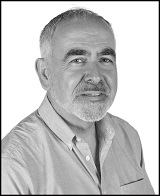 One of the rare pleasures of life is to encounter a movie without the encrustation of prior critical approval, hype, or derision. One of my stand-out cinematic experiences occurred at a very busy stage of my life when I was brought to The Matrix without any prior awareness of plot or critical reception. The sheer pleasure of an unencumbered fresh take on cinema added immeasurably to the experience.
One of the rare pleasures of life is to encounter a movie without the encrustation of prior critical approval, hype, or derision. One of my stand-out cinematic experiences occurred at a very busy stage of my life when I was brought to The Matrix without any prior awareness of plot or critical reception. The sheer pleasure of an unencumbered fresh take on cinema added immeasurably to the experience.
Sadly, the PR machine of modern cinema is such that pre-release interviews, puffs, and early reviews now contaminate the quasi-totality of cinematic viewing. Cinema reviewers are a breed unto themselves, their columns founts of wry urbanity and knowingness. This chic cynicism retains a blind spot, a quasi-monarchical reverence for certain actors and directors, usually those fêted at Sundance or with Un Certain Regard at Cannes or an aristocracy of the daring and experimental, from Isabelle Huppert to Quentin Tarantino.
And so it was with 45 Years, which I suffered through to consider as a candidate for our list of movies on ageing to recommend to our medical students, a list currently topped by the wonderful Pixar Up, followed closely by The Death of Mr Lazarescu, and the remarkable Nebraska. Among the key features we seek are authenticity, cinematic flair, and ideally some adherence to the triad of entertainment, education, and aesthetic value.
The hype for 45 Years had been overwhelming, garnering 5 star reviews across the board, mostly tethered to dazed adulation for its mature stars, Charlotte Rampling (69) and Tom Courtenay (78).
Few can resist the extraordinary appeal of Rampling, whose heady mixture of elegance, erotic capital, and edginess combined with reserve and depth has expanded if not exploded the envelope of roles for English actresses, from The Night Porter to her amorous liaison with a chimpanzee in Max mon Amour. Courtenay has a correspondingly iconic status and broad range, from Billy Liar to The Dresser.
Notwithstanding, I was unprepared for the drab, uneven, and monotonous experience of the movie: at times I felt as if it the evening had consumed a goodly portion of its titular 45 years. Set in the Norfolk broads, the camera work lingered on long takes that in the hands of a Rohmer or Truffaut might have proven spell-binding, but here emphasized the longeurs to a fault.
Apart from a degree of incredulity at the pairing of the uncouth husband urinating into the wind (played by Courtenay) with the aristocratic Rampling, the most disconcerting aspect to a geriatrician was the rather bizarre and fluctuating mixture of gait disorders, distraction, and dyspnea which Courtenay displayed when not going up the ladder to the attic to view memorabilia of a previous girlfriend.
Like the curate’s egg, there were indeed some redeeming features, most notably the brave depiction of sexuality in later life, complete with sternotomy scar and sebhorrheic plaques, and subtle and affecting acting in the dénouement.
Cinema is one of the key leisure activities of medical students, and a fertile base for exploring the medical humanities and cultural gerontology. I find that their tastes include the daring and the exploratory but with a low threshold for pretension.
Much as I welcome the increasing inclusion of older actors and gerontological themes in movies, the mere presence of remarkable actors of advanced age cannot carry a film of this nature alone in the absence of the other factors—authenticity, pace, style and consistency—which move and stimulate us in great films.
Desmond (Des) O’Neill is a geriatrician and cultural gerontologist in Dublin.
Competing interests: None declared.